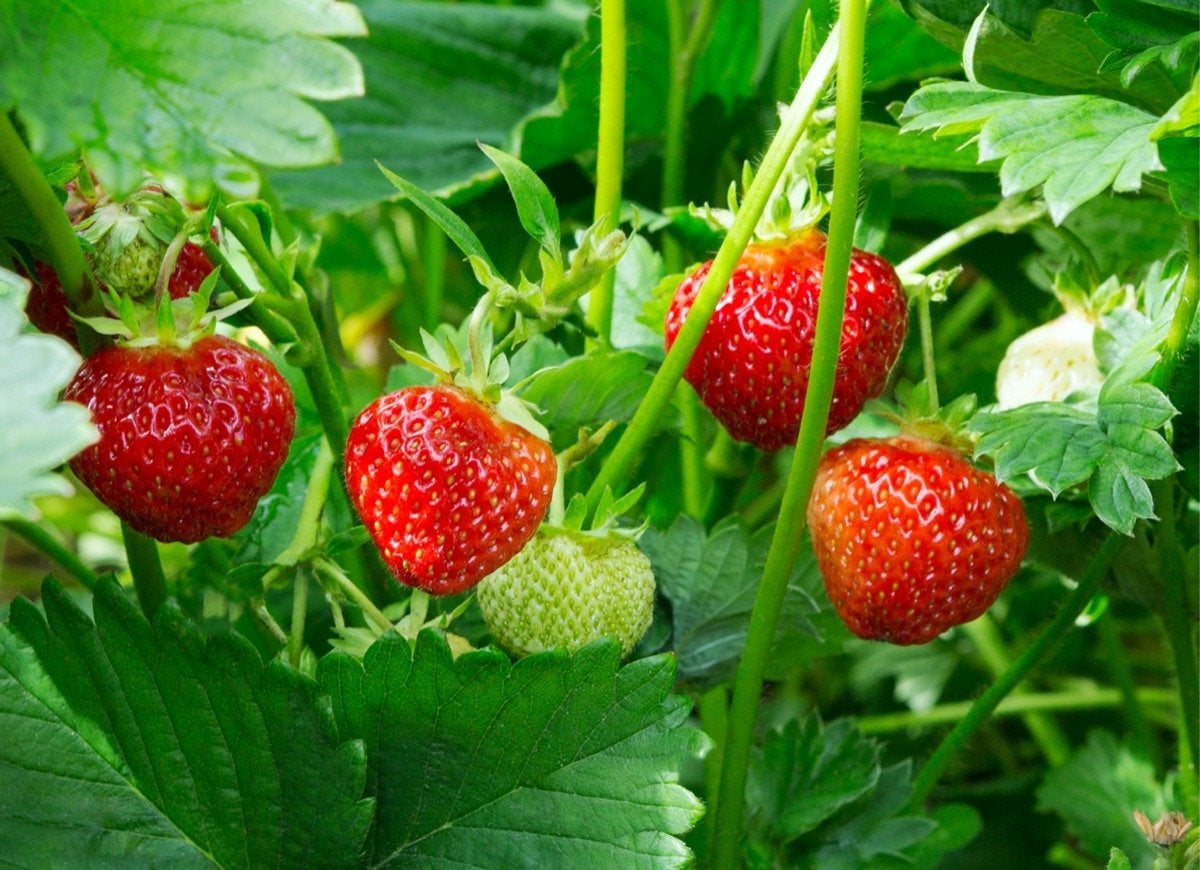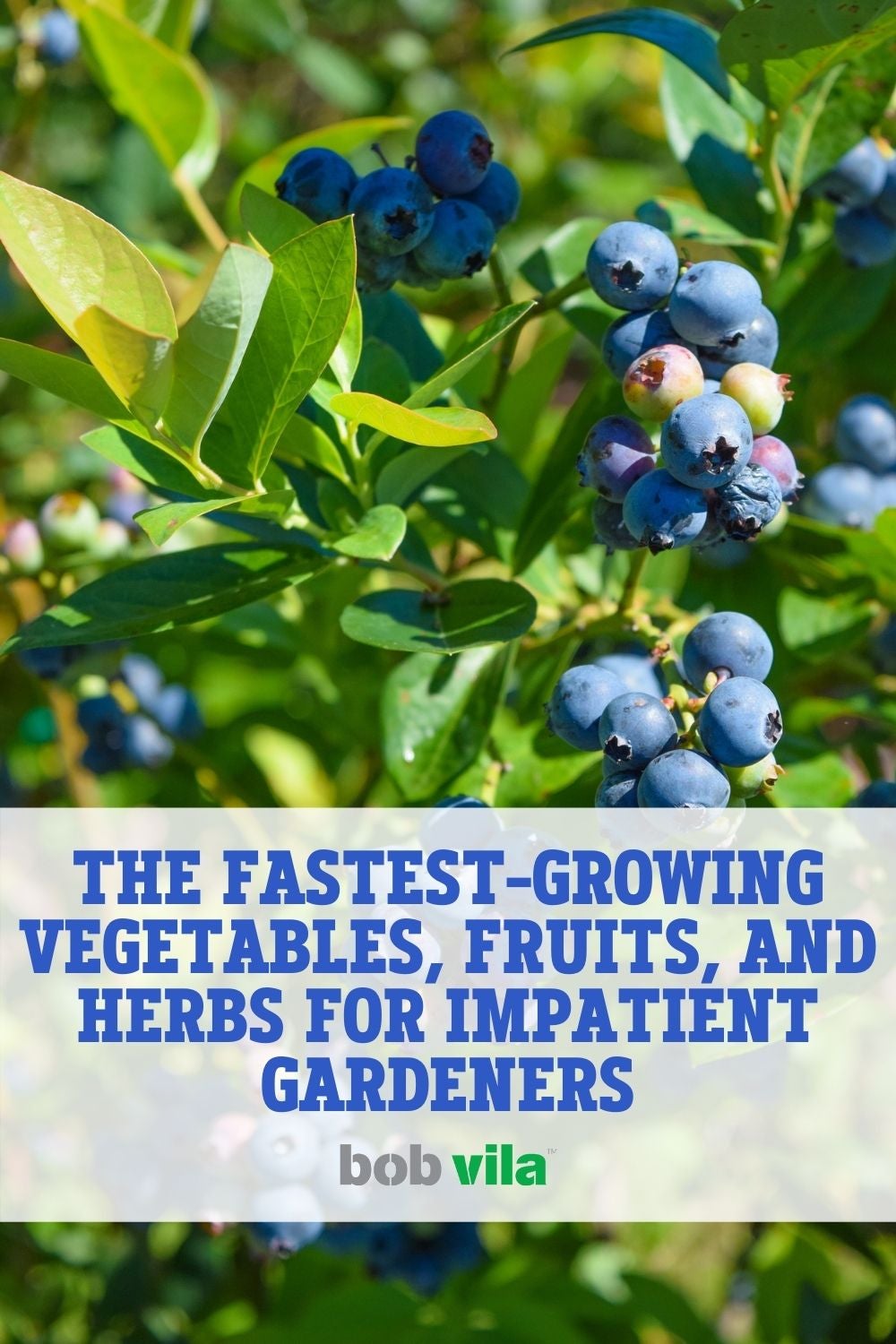

We may earn revenue from the products available on this page and participate in affiliate programs. Learn More ›
Home Advice You Can Trust
Tips, tricks & ideas for a better home and yard, delivered to your inbox daily.
By signing up you agree to our Terms of Service and Privacy Policy.
Speed Gardening

Gardening probably isn’t the best fit for those in need of instant gratification. Gardens take time to mature, especially vegetable gardens. So those of us with little patience need plants that will deliver the goods as quickly as possible. Or maybe you’re not impatient, but you’re getting a late start on planting. No matter why you’re in a hurry, we’ve got you. With this selection of fast-growing fruits, vegetables, and herbs, you won’t have to endure a long growing season to enjoy a bountiful harvest. These plants will have you harvesting in no time. We promise!
Bossa Nova Zucchini

When grown from seed, Bossa Nova zucchini produces beautiful six- to eight-inch fruits in 30 to 45 days. Unlike other vining zucchini plants that need plenty of room to stretch, this bushy one needs about four square feet to produce an abundance of fruit. The mottled light green skin is another bonus, making it easier to see in the garden. Your biggest challenge will be to check them daily once plants start producing fruit. They get big fast, and when harvested after they’ve reached that six- to eight-inch sweet spot, they lose flavor and develop a fibrous texture.
Seychelles Pole Bean

Equally at home in a container or out in the vegetable garden, Seychelles pole beans just need a little support to help these seven- to nine-foot-tall vines reach their peak. Once they do, watch out! You’re in for a constant supply of stringless six-inch beans. It takes only 55 days from the time you direct sow, or plant seeds in the soil, to the day you can start picking. Regular picking encourages the vines to continue producing. This is another plant to watch carefully as the beans lose their flavor and tender texture after they’ve reached that target length.
Bright Lights Swiss Chard

This one hits the garden-world trifecta: It’s edible, gorgeously ornamental, and can be harvested in 28 to 35 days for young salad greens or 49 to 60 days for mature plants. One of the most nutritious vegetables, Swiss chard packs a powerful punch of fiber, calcium, and vitamins A, C, and K as well as a plethora of antioxidants. Plant it near the front of a flower bed or vegetable garden where its violet, yellow, red, orange, white, or pink stems will light up the border.
Easter Egg Radishes

What’s not to love about a plant that’s pretty and takes only three to four weeks to mature when planted from seed? Easter Egg radishes are named for their colorful round roots that come in shades of purple, cream, and red. They’re best sown in spring or fall, when high temperatures won’t kill their mojo. Though June is past their prime sowing time, they’ll grow just as well planted from seed in September for a fall harvest.
Delizz Strawberries

Nothing says summer like strawberries, and with Delizz you can have sweet fruit all season long. A day-neutral plant, this variety fruits throughout the summer and, unlike everbearing strawberries that stop production in summer heat, is unaffected by high temperatures. Don’t let the plant’s compact size fool you! Each one is capable of producing approximately 45 strawberries. Whether in the garden or in containers on your patio, these attractive aromatic plants deliver until fall frost.
Related: The 16 Easiest-to-Grow Vegetables for Novice Gardeners
Green Light Cucumber

Yielding 40 or more personal-sized fruits per plant, Green Light does nothing but go! When planted from seed, three- to four-inch sweet fruits mature in 37 to 42 days. At 80 inches tall, these vining plants need some vertical space, so give them something to climb like a trellis or arbor. Succession planting, or planting more seed every few weeks, will ensure a continuous harvest throughout the growing season. Green Light will grow well in containers, too, as long as you provide enough room for root growth. A pot with an 18 inch or more diameter will do the trick.
Salad Bowl Blend Leaf Lettuce

Lettuce is notorious for calling it quits when the temperatures rise. Salad Bowl blend leaf lettuce has a tougher constitution, which means you can grow this green all summer long. Unlike other lettuces, Salad Bowl blend is heat-tolerant and won’t bolt, or produce a flowering stem. Bolting changes the flavor of lettuces, resulting in bitter-tasting leaves. The blend is a mixture of flavorful green and red leaves that look beautiful in salads or on sandwiches. Plant seeds every three to four weeks for a constant supply of salad greens. It takes approximately 50 days for mature plants.
Perpetua Blueberries

Unlike other blueberry bushes that fruit just once in the summer, Perpetua fruits twice—the first time on old wood in mid-summer, the second on new growth in the fall. What’s more, this blueberry is self-pollinating, so if you have space for only one shrub, you’ll still get fruit. Add another variety or two for a more bountiful harvest. Dark green leaves turn deep shades of red in the fall, and Perpetua looks just as lovely in a container as it does planted in the landscape.
Genovese Basil

If you’re a fan of pesto or Caprese salad, you’ll want to add plenty of Genovese basil to your garden or containers. Lucky for you, the more you cut from the plant, the more large sweet leaves it will produce all summer long. Frequent harvesting also prevents plants from flowering, or bolting, which changes the flavor of the leaves, making them less palatable. While it takes 60 to 90 days to start it from seed, small plants are easy to find at garden centers and home improvement stores. They’ll take off as soon as you give them more permanent digs.
Related: The 16 Easiest-to-Grow Vegetables for Novice Gardeners
Fernleaf Dill

Plant some for you and some for the swallowtail butterflies that rely on host plants like dill and other members of the carrot family. At just 18 inches tall, their compact size makes them perfect for small-space and container gardens. Planted from seed, Fernleaf dill takes approximately 40 days to reach maturity and is slow to bolt. Pinch the flowers off as soon as you notice them to extend the life of the plant. Plant more seed every few weeks to ensure a continuous supply.
Time crunch

You don’t need a green thumb to plant cucumbers, mint or watermelon! Transform your garden into a yummy, fast growing paradise this summer season.

Our Best Advice for Beginner Gardeners
We’ll help you set up your first garden—whether that’s a few pots on your patio, a raised bed, or an in-ground plot out back—and select the right plants for your soil and region.